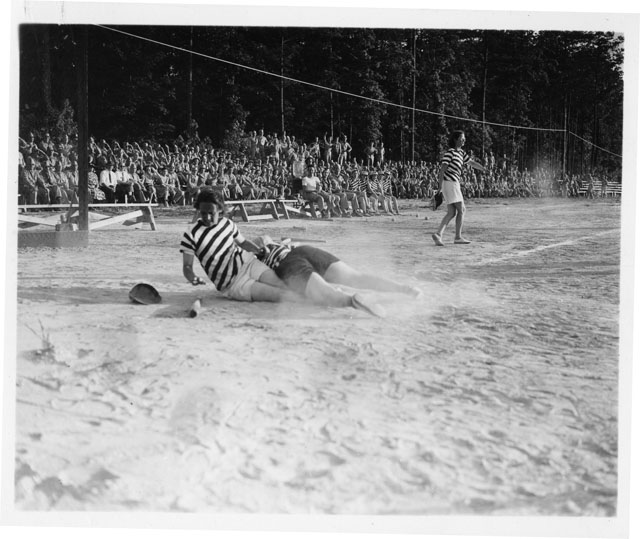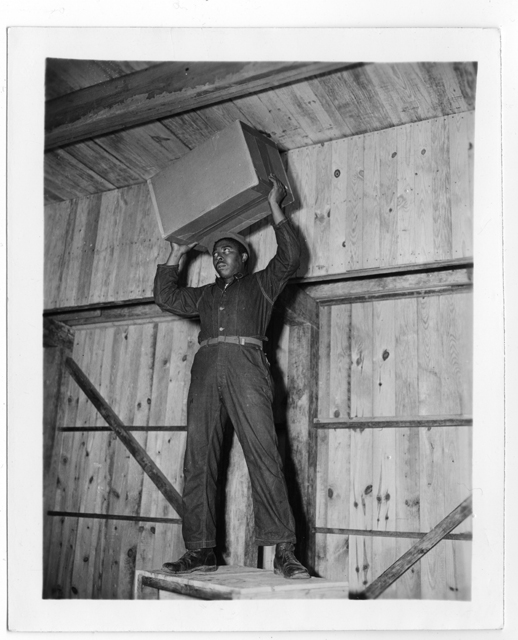For the past few months I have been lucky enough to view the Hampton Roads Port of Embarkation (HRPE) Collection at The Mariners’ Museum Library. This collection includes over fifteen thousand photographs donated in 1946 by Brigadier General John R. Kilpatrick, former commanding officer of the Hampton Roads Port of Embarkation.
Previous to World War II, HRPE served as a military port in the Spanish-American War and in World War I. Following the attack on Pearl Harbor, HRPE was reactivated. These photographs, taken by the United States Army Signal Corps, depict the various aspects of life at HRPE during World War II.
My role with this collection was to sort through all the photographs, select photographs that I found interesting or historically relevant, then scan these photographs, and finally add the photographs and their data into a database called the “Visual Rediscovery Database.”
At first, my main approach with the collection was to focus on photographs that featured women. This was mainly because in addition to adding these photographs to a database, I was conducting research on the roles of women at HRPE during World War II.
Before going through the collection, I had a very vague idea of how a military port functioned, how involved women were in World War II, and how much photographic evidence there would be on women during World War II. What I found after going through the collection was that this war clearly documented the evolution of women’s roles in American society. It showed women evolving towards more active agents in the war effort, and straying from “traditional” feminine roles.
I knew from previous history classes that women normally held down the home front while men were away at war, and that very few women went overseas to serve as nurses. However, during World War II millions of women enlisted in the armed forces and worked as civilian employees.
The Women’s Army Corps (WACS) of HRPE provided a wide array of services both overseas and on base. From conducting foreign language classes to working as welders in the warehouses, women at HRPE played a far more active role in this war than in any other before.
Although the collection overall gave the viewer a sense of progession for women, it also often portrayed women as delicate, and less capable than men. For example, a series of photographs showed men and women exercising. In the photographs with men, men were lifting heavy weights- one even showed a man doing curls with women hanging on either arm. Photographs featuring women exercising showed them doing low activity exercises, such as sitting on the ground and touching their shoulders with their hands.
Although I felt the Signal Corps were fairly objective when documenting the everyday lives of African Americans, women, men, and prisoners of war, the Signal Corps tended to be repetitive in the subject matter they chose. For exampe, there was hardly any evidence of African American women serving at HRPE, and African American men were often photographed doing warehouse work, or performing very basic duties. Furthermore, the Signal Corps focused a lot on recreational activities throughout the camp. For about every 20 photographs I went through, atleast one featured a baseball game, picnic, or any kind of recreational activity done at HRPE.
After viewing the whole collection, I have come away with a better understanding of the roles of women and African Americans in World War II, the functions of a military port, the culture of the 1940’s, and the role of the Signal Corps in documenting a fairly objective and truthful history.

